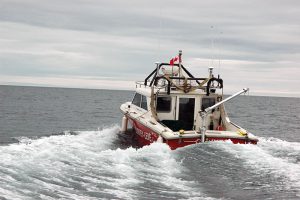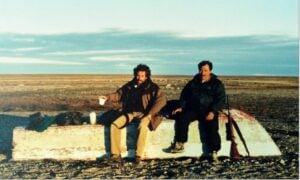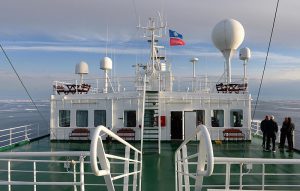
History
2014 Victoria Strait Expedition
This year's search is about much more than underwater archaeology. The Victoria Strait Expedition will contribute to northern science and communities.
- 1205 words
- 5 minutes
This article is over 5 years old and may contain outdated information.
History

In an age where explorers were celebrities, the disappearance of the 1845 British Arctic expedition commanded by Sir John Franklin captivated the attention of the Victorian world. Dozens of searches set out to find the expedition and its ships, and while their efforts yielded fascinating clues about the expedition’s ultimate fate, none were able to locate the HMS Erebus and HMS Terror.
This summer, an unprecedented search for the ships will occur in Nunavut’s Victoria Strait, the location where the vessels were last seen. Some of the most able minds in Canada’s public and private sector are pooling their expertise and resources in the biggest and most technologically advanced search yet – one that will carry the flag of The Royal Canadian Geographical Society. Finding the ships would be the most important underwater archaeological find in decades.
Leona Aglukkaq, minister of the environment, announced the 2014 Victoria Strait Expedition. “Our government has made the North a priority. Through exploration and research in Canada’s Arctic, we can understand our past and secure our future,” she said in a statement.
“The 2014 search for the Franklin ships not only provides the greatest opportunity yet for finding the historic Franklin vessels, it will contribute significantly to our government’s Northern Strategy. Information gathered on this expedition will provide benefits to Canadians in the areas of Arctic sovereignty, marine safety, environmental protection, science and technology, history and culture,” added Ms. Aglukkaq, who is the minister responsible for both Parks Canada and the Arctic Council.
The 2014 search has been greatly enhanced by a ground-breaking private-public agreement, as government assets will be joined by the One Ocean Voyager, the flagship of polar cruise and logistics experts One Ocean Expeditions.
The Royal Canadian Geographical Society has assembled a partnership of organizations with experience and interest in the Arctic, consisting of the W. Garfield Weston Foundation, One Ocean Expeditions, Shell Canada and the Arctic Research Foundation. Together, their support of the Victoria Strait Expedition will make the One Ocean Voyager available to support the search and also help raise awareness of Canada’s North and reinforce a shared commitment to supporting northern research.
“This summer’s search brings together an extraordinary group of partners,” says John Geiger, chief executive officer of The Royal Canadian Geographical Society. “There are more ships, better technology and greater overall capability than ever before. The chances of finding the Erebus and Terror have never been better.”
“The W. Garfield Weston Foundation was a catalyst for this project, and with our other partners, have made this exciting expedition possible,” said Geiger, adding that Shell Canada, a long-time educational partner of The Royal Canadian Geographical Society with a lasting commitment to Canada’s Arctic, brings five decades worth of operational experience in the North to thissummer’s search.
From aboard Parks Canada’s HMCS Investigator and the Arctic Research Foundation’s Martin Bergmann, which was specially refitted to search for the Erebus and Terror, Parks Canada’s elite underwater archaeology unit will be seeking out signs of the centuries old ships. The Canadian Coast Guard icebreaker CCGS Sir Wilfrid Laurier will deploy multi-beam sonar, and the Canadian Hydrographic Service will send two custom designed survey vessels into the field to conduct three dimensional seabed mapping. The Royal Canadian Navy’s HMCS Kingston will be aiding in the search, and Defence Research and Development Canada will be exploring the seabed cutting edge Arctic Explorer, a 10-metre autonomous underwater vehicle that will allow searchers to look places they haven’t been able to reach until now.
The Canadian Hydrographic Service will be working to produce new navigational charts; the Canadian Space Agency will provide satellite data that helps searchers on the ground better understand the ice around them; and the Government of Nunavut will be conducting a land based archaeological survey on King William Island.
“The Royal Canadian Geographical Society is proud to be working with all our partners — public and private — to locate the lost ships of the Franklin Expedition, thereby uncovering an historical treasure not only for Canada, but for the world,” said Geiger.
Are you passionate about Canadian geography?
You can support Canadian Geographic in 3 ways:

History
This year's search is about much more than underwater archaeology. The Victoria Strait Expedition will contribute to northern science and communities.

History
Arctic historian Ken McGoogan takes an in-depth, contemporary perspective on the legacy of Sir John Franklin, offering a new explanation of the famous Northern mystery

People & Culture
On April 12, Franklin enthusiasts had a rare opportunity to come together in the same room as The Royal Canadian Geographical Society presented their 2016 Can Geo Talks

History
First official day of the 2014 search for Sir John Franklin’s lost ships